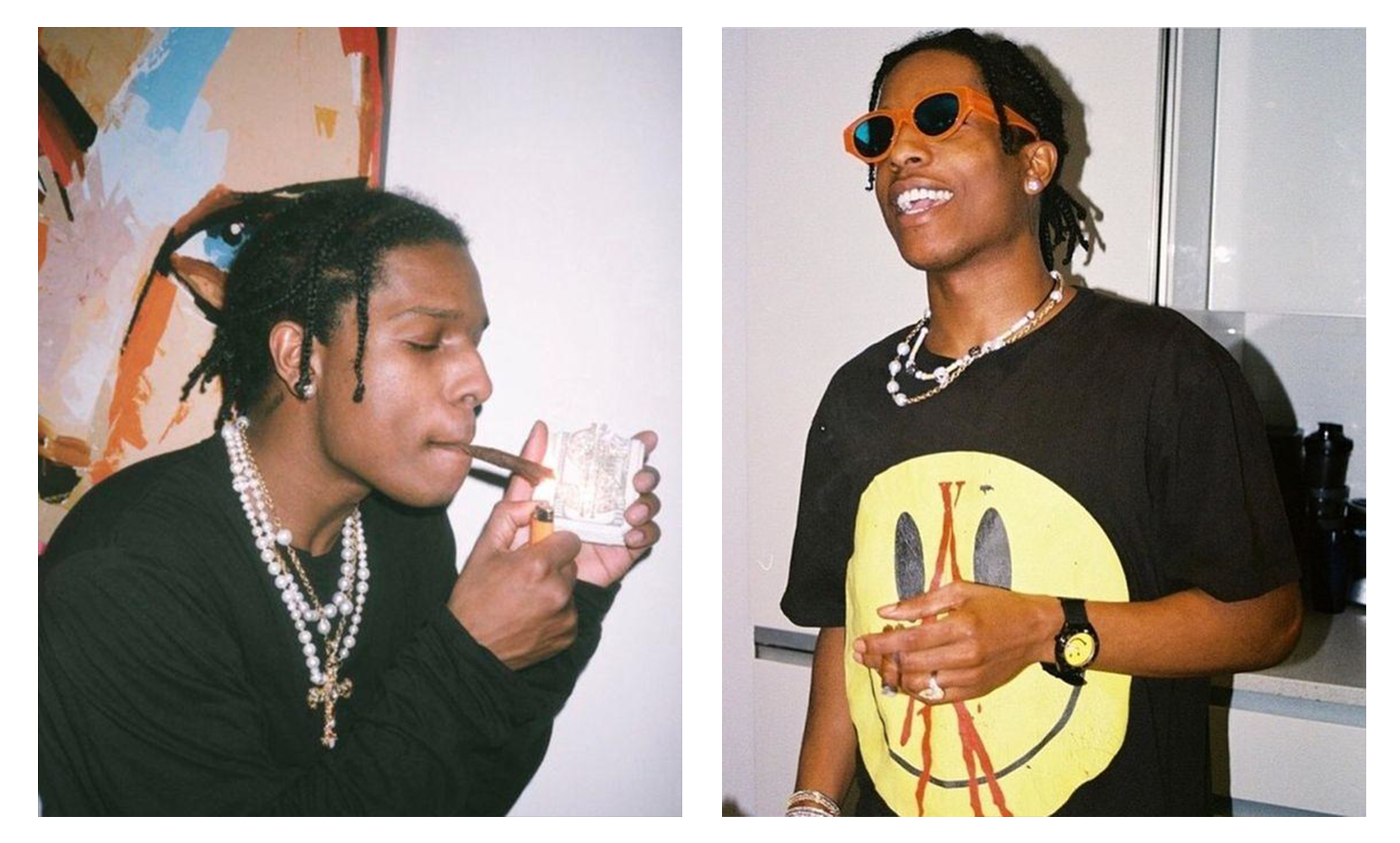Are Pearls A Man's Best Friend? Yes.
We have seen it recently on friends, models or singers. Delicately hanging on men’s high statures, just a few fragile white pearls, arranged on a tight necklace. A pearl necklace. Precisely the same as Sisi the Empress wore, or as Coco Chanel democratized.
Known as “treasures of the sea”, the precious pearls are the ultimate symbols of pureness and rarity. For a long time, their origin was a mystery and explained as drops of dew that have fallen inside the rough oysters. Today, we know that the mollusk, bothered by a grain of sand, recovers it by nacre (mother-of-pearl).
But there is a greater story to this necklace than the natural origin of the pearls, or the famous princesses who possessed it. It also involves men. Men wearing an object that in the past centuries was considered a typical attribute of femininity.
A$ap Rocky
The strings of pearls were first prominent in the Persian Gulf and in India, near the hot seas where pearl oysters proliferated. During their golden age, Maharajas exposed all their wealth by multiplying the rows of pearls on their necklaces and the jewelry symbolized purity and plenitude. But even before, pearls fascinated the Occident, and there are written traces, as well as relics, proving their presence since the Roman empire. The fashion trend prevailed in Europe during the Renaissance, and men wore the necklace as a fine accessory in high society. One example is the distinguished Duke of Buckingham, very often depicted on his official portraits with considerable strings of pearls.
Then, women made the pearl necklace an essential element of their wardrobe, common to all trends and centuries. The jewellery never really disappeared, worn for galas, weddings, sophisticated celebrations, but also as an element of refined daily elegance.
So, what is the comeback of the so common gleaming pearl on boys’ necks telling us?
Fashion, on this question, reveals again all its magic. This piece of jewellery that we saw on our grandmothers, mothers, in movies, as chains or shockers, with single or multiple rows, with huge or small pearls, takes another dimension on men.
Photo via Vogue.com
We can discuss the aesthetic of the necklace, as stated before, which has not truly changed since its apparition as early as 420 BC. Doubtlessly, the main difference concerns gender, and here lies a perspective of questioning not forward-looking, but that, on the contrary, forces us to reappropriate the story of our past.
Wearing a necklace, for a man, and even more made of pearls, is a step out of the rooted concept of masculinity, more or less challenging depending on the environment. Some will argue that it is the perfect example of our society’s move towards a future gender fluid, tolerant, open-minded, and so on. And of course it is. What will grandmothers say when instead of giving their pearl necklace to their granddaughter, they will offer it to their grandson?
But it is not totally accurate.
For once, we have the right to claim that pearl necklaces are a perfectly natural fashion trend, and it is partially false to pretend they are to be only the products of a change in our mentality. Because, as shown by its story, the pearl necklace was first worn equally by men and women. At all stages of our history, pearls were adored by the richest kings and queens of the Persian, the Chinese, or the Roman empires. Julius Caesar in the first century BC even passed a law to authorize only the ruling class to wear pearls. Knights, in the Middle-Age, wore pearl necklaces on the battlefield to bring them luck. There is plenty of evidence that shows, historically, that the pearl necklace belongs to men as much as it belongs to women.
Harry Styles shot by Samuel Bradley



